in the news
Catch Up With Us!
Whether by cooling neighborhood streets, filtering water that goes into the bay, or investing in our green workforce, Baltimore Tree Trust has a direct impact on Baltimore’s communities. Scroll down to see our features in the press, and to learn more about our mission to grow Baltimore’s urban tree canopy.
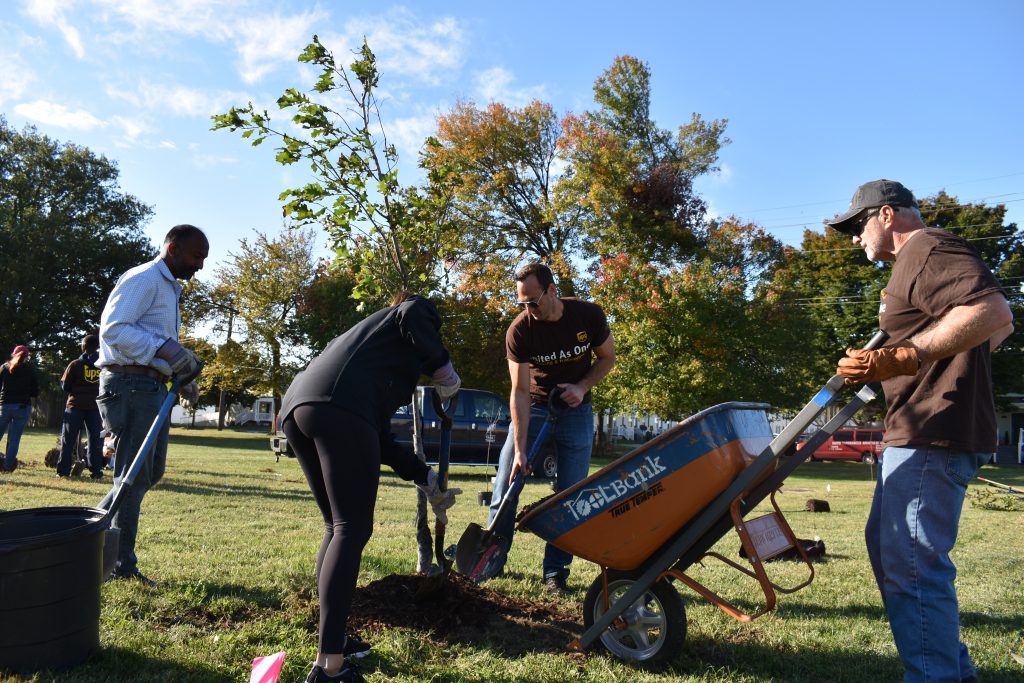
Check out this WJZ Baltimore news coverage of our volunteer planting day at MedStar Harbor Hospital.
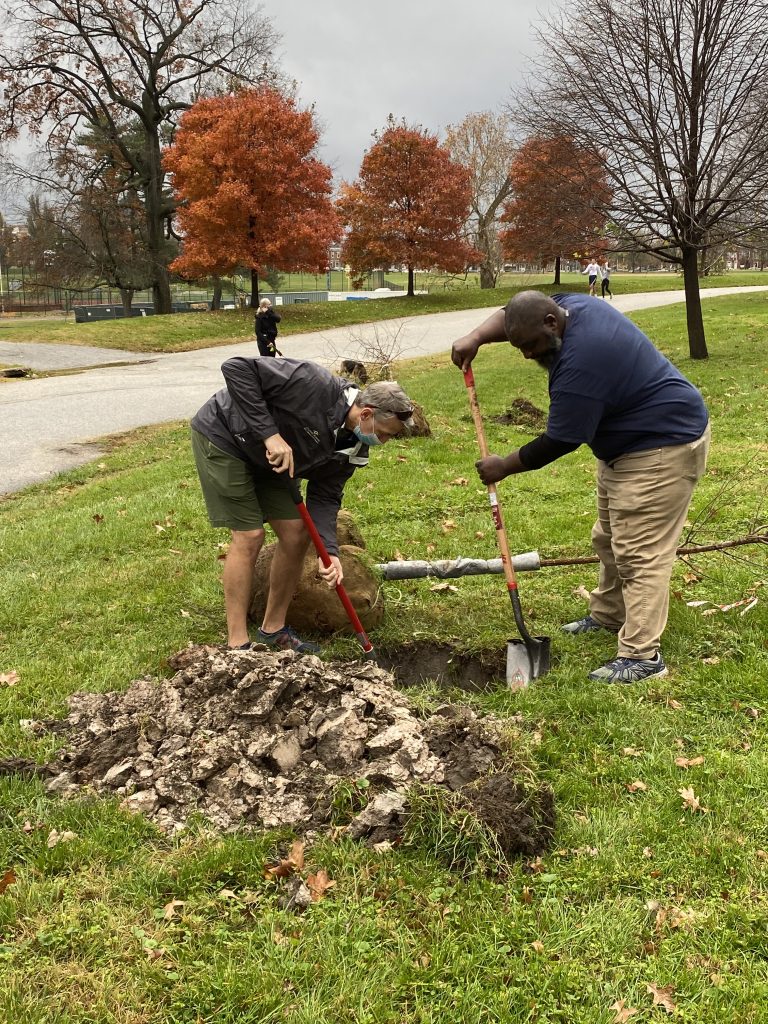
Check out this story by The Beacon Newspaper highlighting the Tree Trust’s operations and volunteer efforts helping to create a greener and healthier Baltimore.
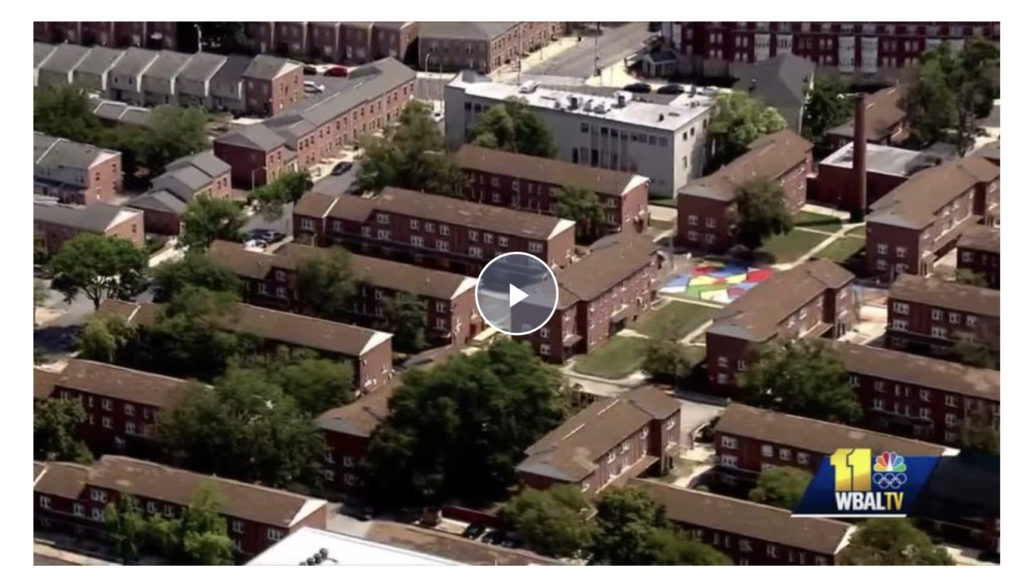
WBALT interview profiling how Tree Trust is working to improve Baltimore City’s green landscape and addressing heat inequality in urban communities.
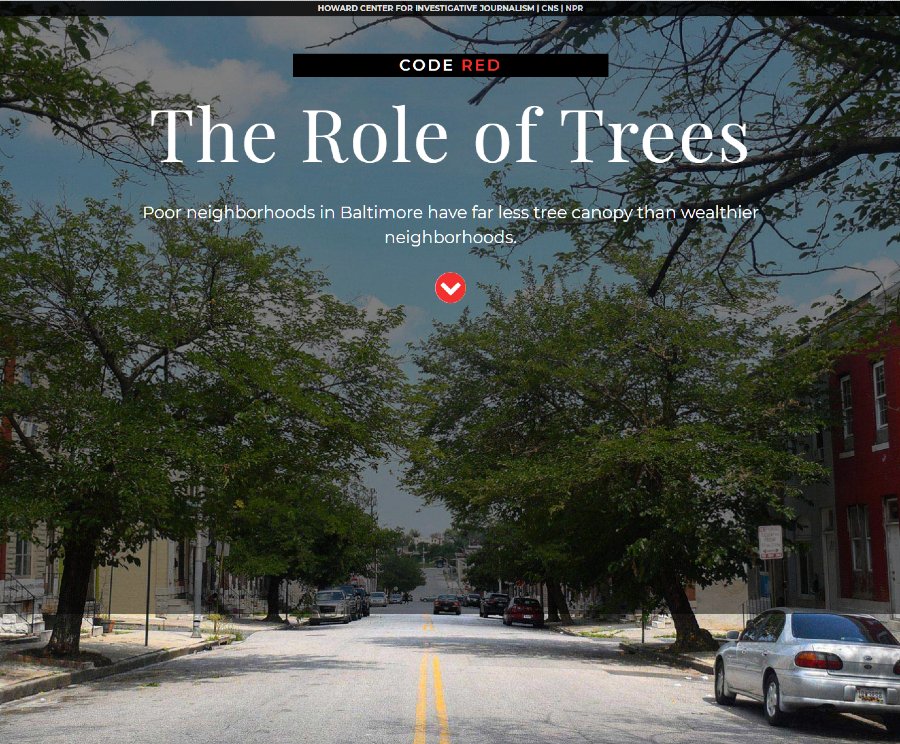
Check out this beautiful and comprehensive series on climate change, poverty, redlining, tree canopy, and public health in Baltimore city. We worked with folks from NPR and Capital News Service to dig into the many ways we must be prioritizing a healthy and maintained tree canopy. There is a lot to learn from this piece, and you can read more at the link below.
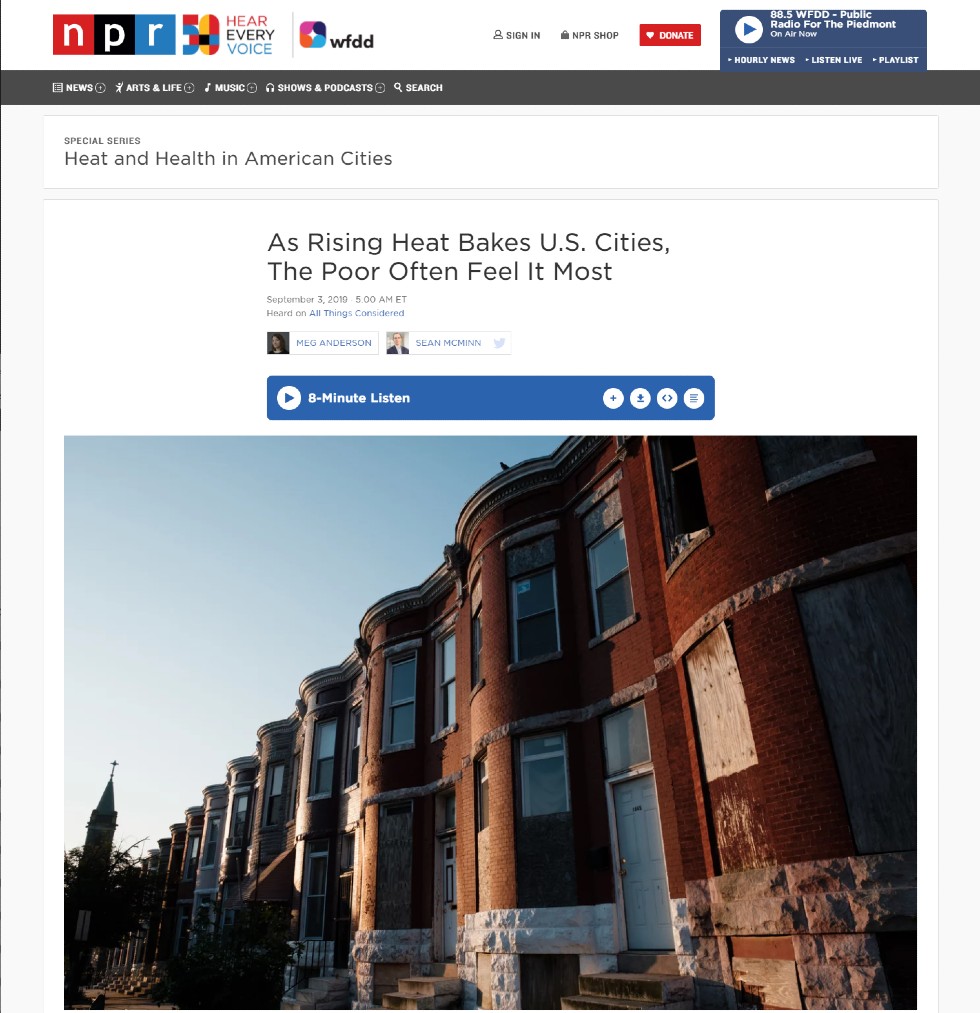
The urban heat island and its implications continues to take the spotlight here in Baltimore and around the world. As we consider how best to prepare for the effects of climate change, we must be taking into account the historical context of Baltimore city, and which populations are most effected by extreme heat and poor air quality. This NPR piece focuses on local officials and initiatives, and links to a comprehensive study on urban heat.
You can read more at the link below.
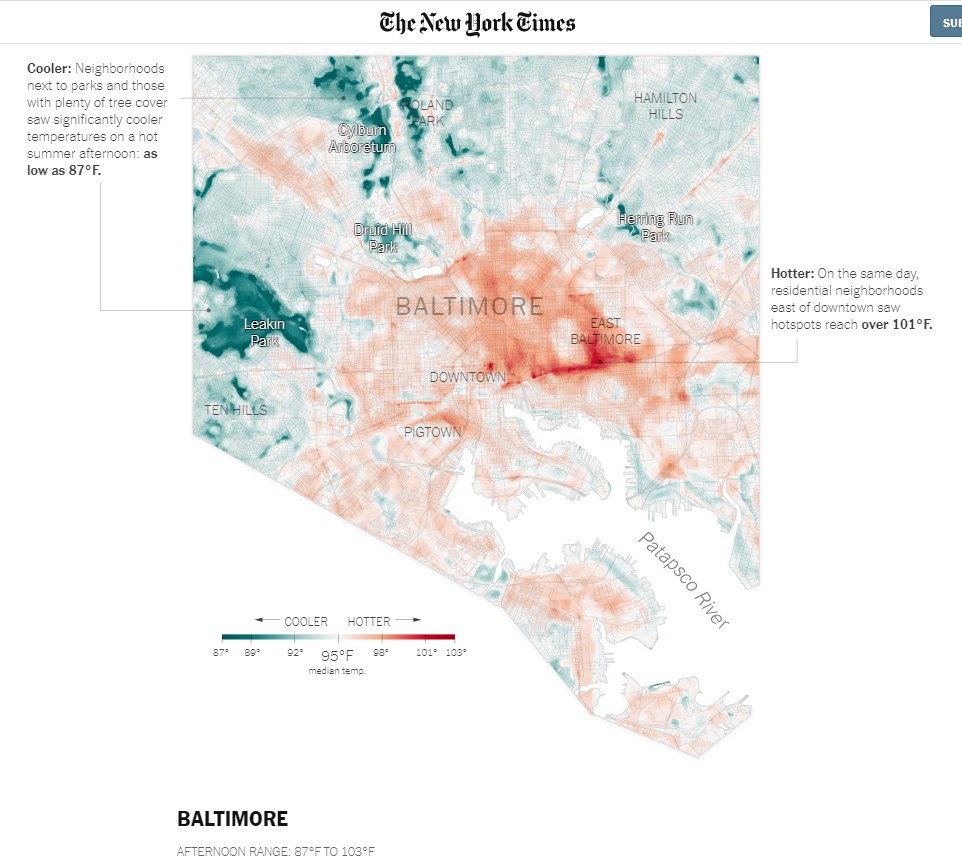
During the summer of 2018, we participated in a study of Baltimore urban heat island. The results showed a 16-degree difference in temperature at the same time of day, dependent on location in the city. We are excited to see that this study, and the folks at NOAA and the Science Museum of Virginia, has since been featured in the New York Times.
Pretty cool! You can read more at the link below.
Our planting program, “Tree for Public Health,” got a feature in this article in the Baltimore Beacon. “‘Trees for Public Health’ is an age-inclusive program that engages entire neighborhoods’…”
Thanks for the shout-out! You can read more at the link below.
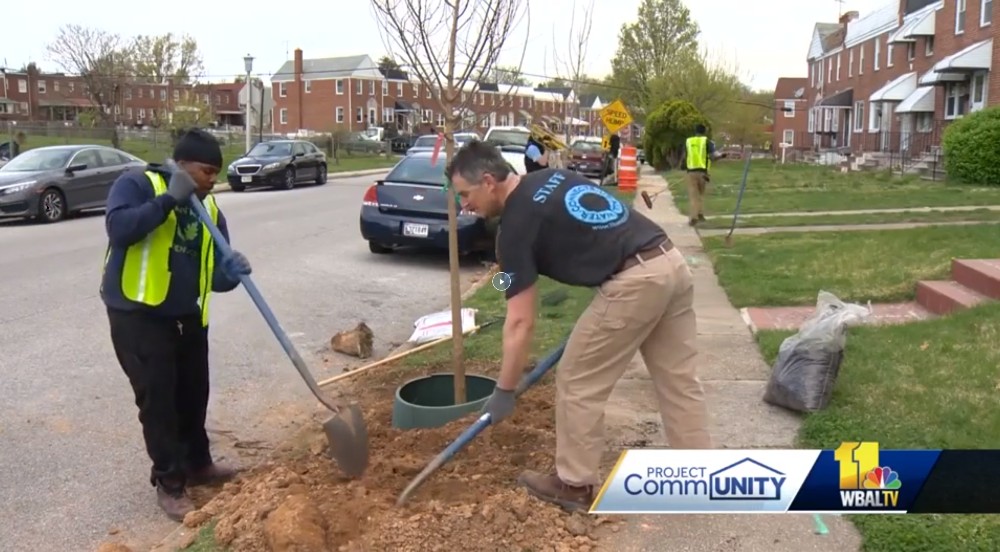
Our Urban Roots Apprenticeship got featured in this WBAL piece about tree-planting in Belair-Edison, alongside our friends at Blue Water Baltimore. Check it out!
“It’s also an investment in someone like Darrian Birden, with Baltimore Tree Trust. ‘I take pride in doing it. It’s something l like to do,’ Birden said. Through the program Strive, he was able to get training and certification. He said he wants to own a landscape company one day.’ Just to see how you can help with the community, when you finally put the tree up, it makes you feel good about it. You put something in the neighborhood, so I feel good doing it,’ Birden said.”
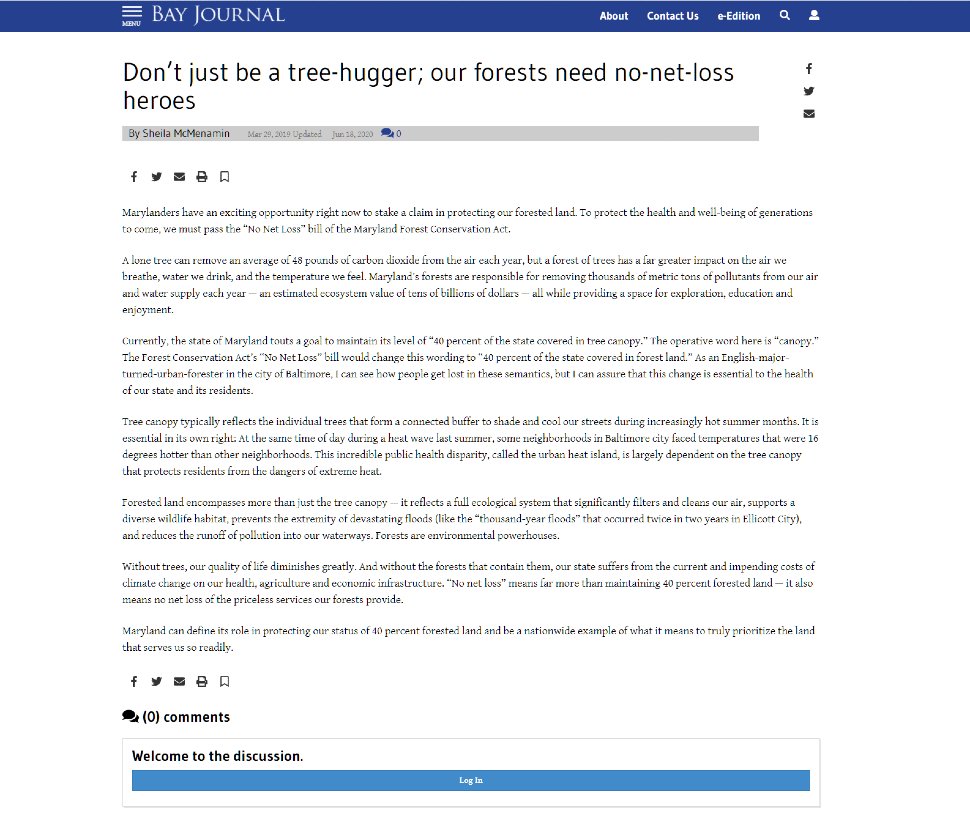
BTT Director of Programs Sheila McMenamin published her op/ed in the March 2019 Chesapeake Bay Journal. Read more to learn why we should be promoting the protection of forested land in our state.
“Forested land encompasses more than just the tree canopy — it reflects a full ecological system that significantly filters and cleans our air, supports a diverse wildlife habitat, prevents the extremity of devastating floods (like the “thousand-year floods” that occurred twice in two years in Ellicott City), and reduces the runoff of pollution into our waterways. Forests are environmental powerhouses.”
BTT Director of Programs, Sheila McMenamin, and her friend Katie Long from Friends of Patterson Park, REALLY care about our state’s forests.
Check out their song “No Net Loss,” and get involved in supporting this year’s Forest Conservation Act.
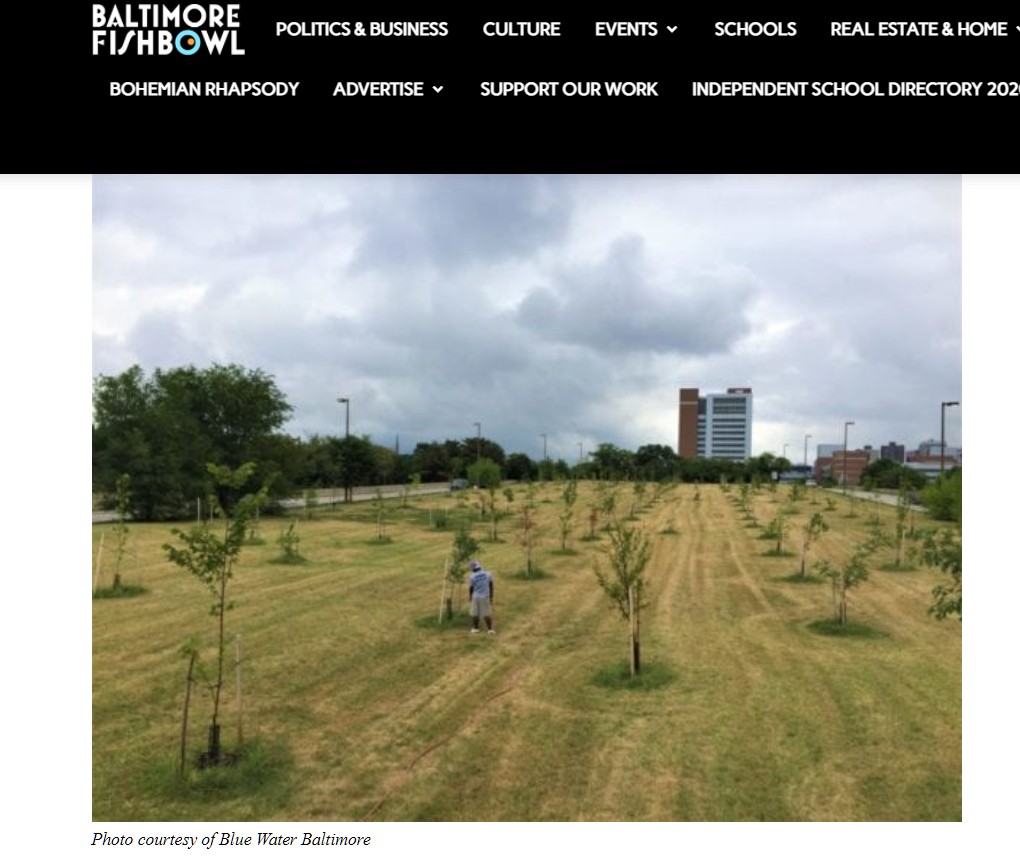
“Over the last two years, volunteers and staff planted 477 trees in a seven-acre along the median between Martin Luther King, Jr. Boulevard and Fulton Avenue as part of a “greening” initiative. Trees can help absorb water, reducing stormwater runoff and pollution—a big boon to the ailing harbor—and also help to add green space, making an area simply look nicer.
Carl Simon, director of programs for Blue Water Baltimore, said in an email that the Baltimore Tree Trust helped pay for more than 200 of the trees planted this season, during the project’s final phase.”
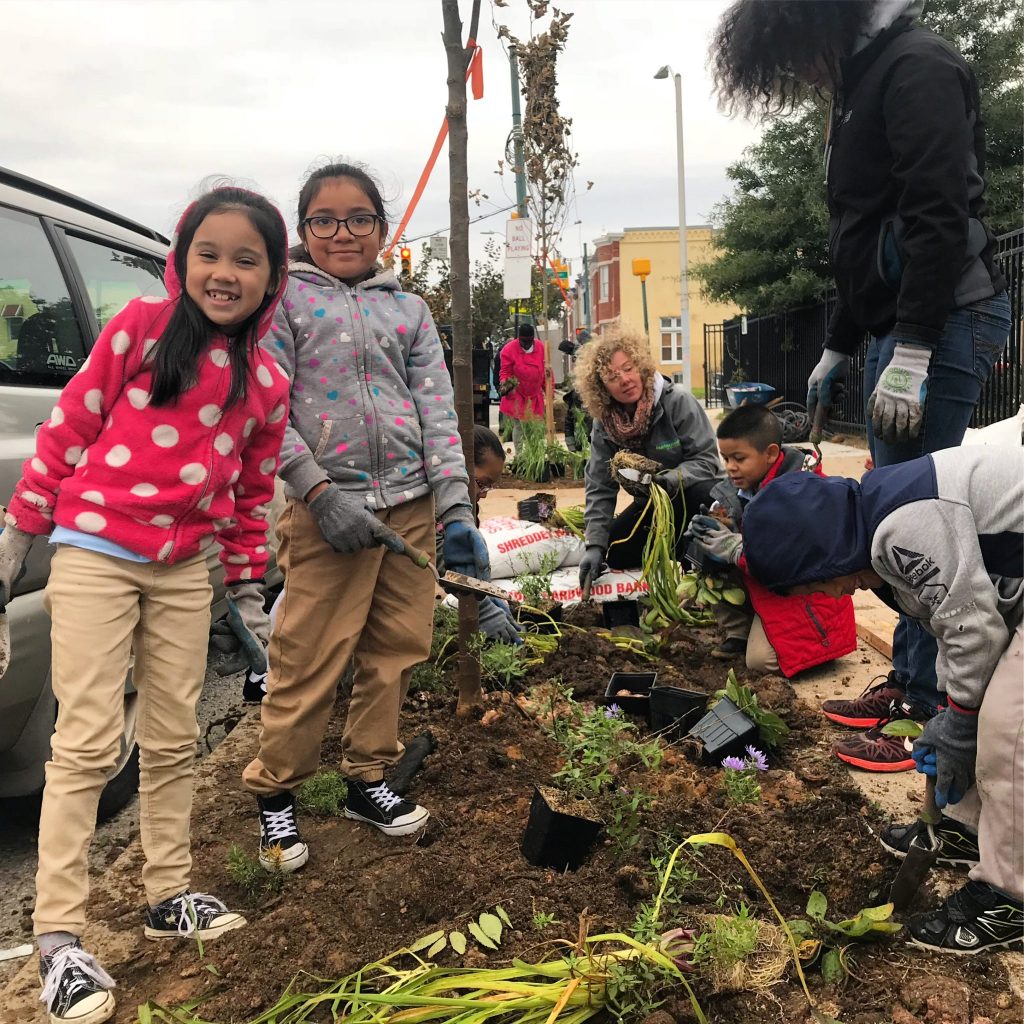
“It’s all about the environment and the connection to a healthy harbor. Five new trees and some native perennial flowers are being planted on the sidewalk in front of William Paca Elementary School on North Lakewood Avenue.
‘They learn a lot about the life cycle of plants and animals,’ said teacher, Adreon Hubbard. ‘And some of the students have raised monarch butterflies with me in the classroom from milkweed we grew in the schoolyard’.” […] ‘So this area gets a ton of runoff because of all of the concrete,’ said Mark Conway, executive director of the Baltimore Tree Trust. ‘So these tree pits will help to capture some of that water and help make this community look a little better’.”

“In late August citizen scientists took to the streets to collect real-time data about the hottest places in Baltimore and Washington, D.C. Their efforts paid off and new maps were released today showing that, on one of the hottest days of summer, people in some Baltimore neighborhoods sweltered in temperatures of 103 degrees F, some 16 degrees higher than the coolest parts of the city at the same time in the afternoon.
[…] Sheila McMenamin, a volunteer who collected heat data, is excited to have the maps to help with her work as Director of Programs for the Baltimore Tree Trust. ‘Heat islands are a serious public health issue, and this data shows a clear connection between areas of our city lacking tree canopy and the extreme pockets of heat that residents are enduring over the summer months. The maps will help us continue to work within the community to champion the accessibility, growth, and maintenance of our city’s green spaces’.”
The Baltimore Tree Trust (501c3) was founded in 2008 to make Baltimore a greener and healthier place to live. Our initial priority was to “plant out” the Harris Creek Watershed, an underground creek spanning from Canton to Clifton Park in east Baltimore. This area of Baltimore is one of the main “urban heat islands” in our city–reaching temperatures that are up to 16°F hotter than other leafier neighborhoods at the same time on a summer day.
We began working in the McElderry Park neighborhood in 2012, where we planted 464 trees by April 2015. Since then, we spread out to neighborhoods across Baltimore, planting a total of 10,000 trees and counting. Our trees will shade, clean and cool these streets for decades to come, not only preparing our city for the effects of a changing climate, but contributing to a stronger sense of place for our residents.
Trees are vital to healthy neighborhoods and we have been grateful to be a part of this work.

